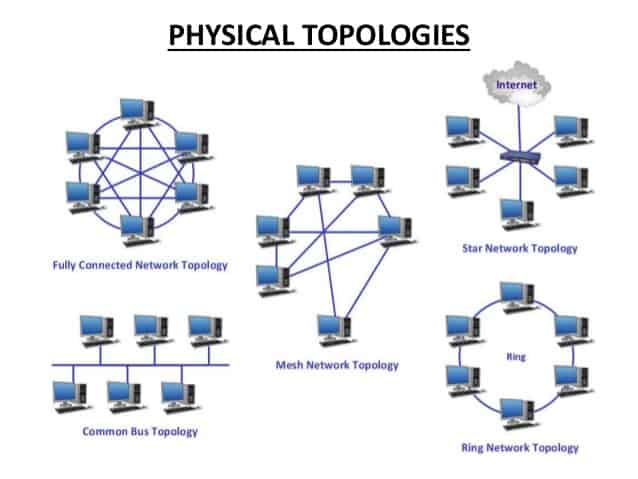Network Topology is the physical layout of computers, cables, switches, routers, and other components of a network. This term can also refer to the underlying network architecture, such as Ethernet or Token Ring. The word “topology” comes from topos, which is Greek for «place».
How It Works
When you design a network, your choice of topology will be determined by the size, architecture, cost, and management of the network. Basic network topologies include the following:
BUS TOPOLOGY
The stations are connected in a linear fashion. An example is the 10Base2 form of Ethernet. (read more)
STAR TOPOLOGY
The stations are connected to a single concentrating device called a hub (Ethernet) or a Multistation Access Unit, or MAU (Token Ring physical topology). (read more)
RING TOPOLOGY
The stations are connected in a ring. Examples are Fiber Distributed Data Interface, or FDDI (logical and physical ring), and Token Ring (logical ring and physical star). (read more)
MESH TOPOLOGY
The stations are connected in a complex, redundant pattern. This topology is generally used only in wide area networks (WANs) in which different networks are connected using routers.

Variations of these basic topologies include the following:
STAR BUS TOPOLOGY
Consists of many star networks whose concentrators (hubs) are connected in a linear bus fashion. (read more)
STAR-WIRED TOPOLOGY OR CASCADE-STAR TOPOLOGY
Consists of star networks whose hubs are joined in star formation to other hubs, forming a kind of tree-shaped network with the main hub at the top
NOTE:
The term “topology” can refer to either a network’s physical topology, which is the actual physical layout or pattern of the cabling, or its logical topology, which is the path that signals actually take around the network. This difference is most evident in Token Ring networks, whose cabling is physically arranged in a star but whose signal flows in a ring from one component to the next. The term “topology” without any further description is usually assumed to mean the physical layout.
It is helpful for a network administrator to know the pros and cons of different network topologies when putting together a network. By weighing the benefits of each type, the administrator can choose the configuration that is most efficient for the network’s intended purpose.
Choosing a Topology
What to consider when choosing a topology?
- Money. A linear bus network may be the least expensive way to install a network; you do not have to purchase concentrators.
- Length of cable needed. The linear bus network uses shorter lengths of cable.
- Future growth. With a star topology, expanding a network is easily done by adding another concentrator.
- Cable type. The most common cable in schools is unshielded twisted pair, which is most often used with star topologies.